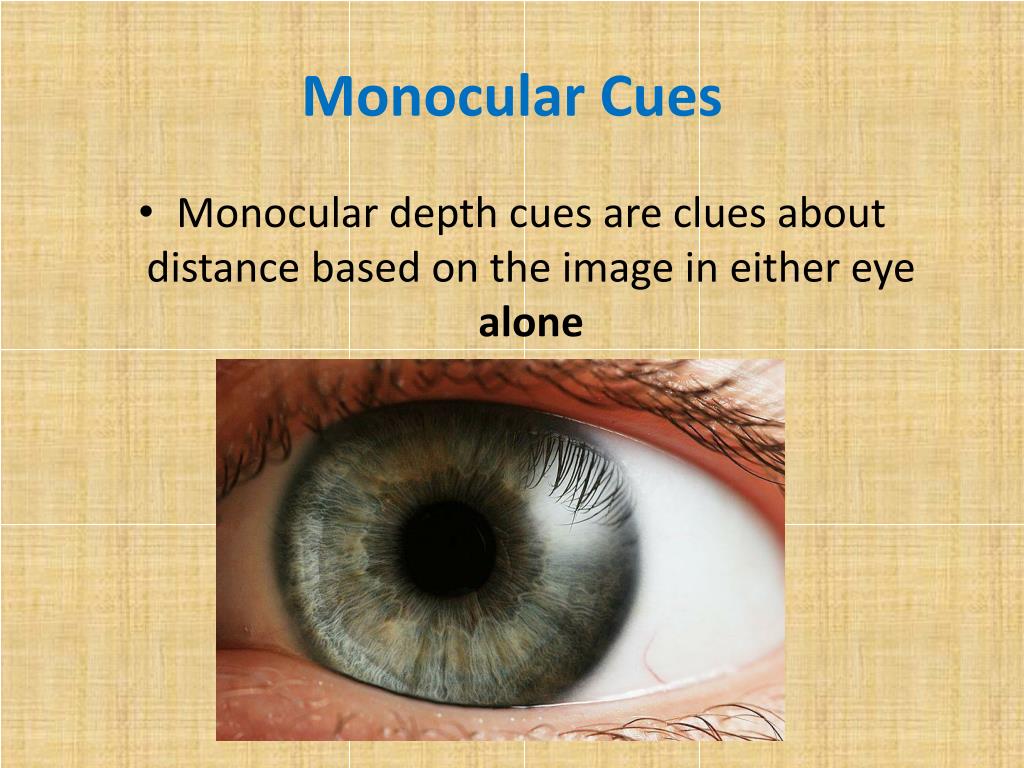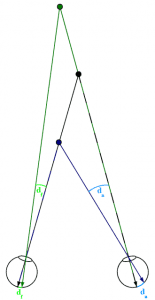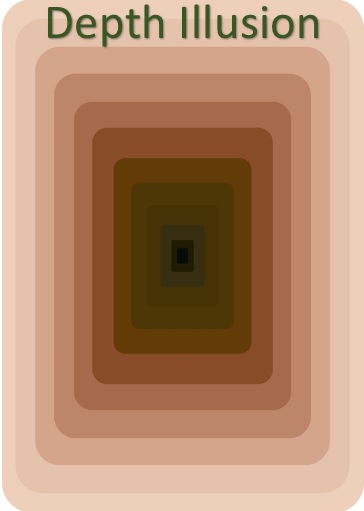


This principle maintains that when the human mind forms a percept, the whole has a reality of its own, independent of the parts.
#Binocular depth cues series#
The phi phenomenon is the optical illusion of perceiving a series of still images, when viewed in rapid succession, as continuous motion.Face recognition refers to an individual's understanding and interpretation of the face, particularly the human face, especially in relation to the associated information processing in the brain.This visual cue is integral to judging distances of objects. Multistable perceptual phenomena are a form of perceptual phenomena in which there are unpredictable sequences of spontaneous subjective changes. According to Johnston et al (1993), physiological binocular cues include retinal convergence.A model that can account for these results requires a combination of (1) monocular depth cues, (2) binocular disparity, as well as (3) a weighted average of spatial positions of points and features in the two retinae. These results are inconsistent with any theory that is based exclusively on absolute or relative disparity. In (ii), the percept does correspond to a non-rigid cube stretching in depth, but the cube sometimes oscillates around the vertical axis for some subjects. The amplitude of the perceived oscillation is smaller than that of the simulated object.
#Binocular depth cues pdf#
In (i) the percept is of a cube oscillating around the vertical axis, with minimal or no non-rigidity, in violation of the disparity calculations. depth perception pictoral depth cues diagram pdf stages involved in calculating depth from binocular information: stage solving the problem.


For both stimuli, depth calculations based on disparity predict a percept of a non-rigid object whose Y junction vertex moves toward and away from the eye that views the stationary image. The second image changed the changes were produced by an oscillation of the simulated object around the vertical axis going through the center of the cube. Monocular Cues: Some of the monocular cues are described below: 1. One image of the stereo pair was stationary. ADVERTISEMENTS: After reading this article you will learn about the monocular and binocular cues for interpretation of the perception of depth. In (i) there were strong perspective cues to the three-dimensionality of the stimulus, but in (ii) perspective cues were largely absent. It can be used to create an illusion of depth in a picture using special viewing devices or glasses. The impression of depth created by binocular disparity is called stereopsis. The brain compares these two images as part of depth perception. In condition (i), the cube was represented by 9 visible edges, and in condition (ii), by 6 visible edges and a dot at the vertex of the visible Y junction. Perception : Example Question 8 Retinal disparity is a binocular depth cue, not a monocular cue. This is the depth cue known as binocular (retinal) disparity. Images were presented on a monitor and viewed by using a modified Elliot's stereoscope. We will present a new visual phenomenon, which demonstrates the operation of both. It has been conjectured, however, that there is a second binocular mechanism, based on the average of spatial positions of points in the two retinae (Rose & Blake, 1988 Regan, 2000). Julesz (1960) demonstrated, using RDS, that binocular depth perception can be based solely on binocular disparity, defined as a difference between spatial positions of points in the two retinae.


 0 kommentar(er)
0 kommentar(er)
